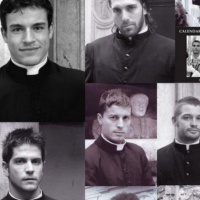
Balance prudent self-reliance with healthy, interdependent relationships.
Some time ago, I came across a book called The Lonely American: Drifting Apart in the Twenty-first Century[1](written by two psychiatrists). A quote from the book:
“Being neighborly used to mean visiting people. Now being nice to your neighbor means not bothering them.”
I think this anti-social attitude has infected much of the technologically advanced world, not just America. We leave people alone because we think that’s what they want, yet loneliness has become a hallmark complaint of modern men and women. We dare not show our faces on our neighbors’ front porches…
…yet we scrawl updates on the walls of their facebook pages, we tweet until our smart phones are hoarse, we forward emails to all our contacts. It’s paradoxical. We have an explosion of online social networks, endless opportunities to “connect,” but how many of us scroll through our computer screens, feverishly hitting the delete button, just looking for something—anything—from someone we actually know or that we actually want to spend time reading?[2]
It’s good lift up our eyes, away from our screens, and be really physically present to other human beings.

illustration from the front cover of O Come Ye Back to Ireland, painted by Christine Breen
Susan K. Rowland, in her book Make Room for God, discusses at length Sarah Lanier’s[3] comparison of “hot-climate” and “cold-climate” cultures:
“Hot-climate cultures are communal, group-oriented, inclusive and spontaneous. Cold-climate cultures are more individualistic, privacy-oriented and interested in structure and productivity.”
My parents grew up in England—which has elements of both hot- and cold-climate cultures—but cultures definitely collided when she encountered the true hot-climate culture of southern California in the 1960s. She and my dad had just moved to America with their infant daughter (me). After several months of dealing with the apparently certifiably insane population of La Mesa on the odd side of town, they moved into a new place. My mom, expecting the worst, battened down the hatches, unwilling to interact with more of these crazy Americans.
To no avail: one morning there was a knock on the sliding door of the kitchen. In walked her new neighbors with freshly baked goods and coffee. Long story short—these two or three families spent the next five years raising their small children together, and even though they now live across the continent from one another, they are friends to this day.
What does any of this have to do with simplicity?
Living and working in close proximity to other people, and building intentional community with them, simplifies things because you can pool resources of time and energy, tools and materials, emotional strength and physical skills.
“Many hands make light work.” (John Heywood, 1546)

Cocooning with just our nuclear family on the back deck while the front porch remains unused isolates and limits us. You don’t have to reinvent the wheel—you can ask your neighbor if you can borrow his wheel. And, even though we are sturdy, self-reliant Americans, we don’t have to do everything alone in this increasingly cold-climate culture:
- The Amish and other “plain living” subcultures excel at the principle of collaboration, with their barn-raisings and other community activities.[4] [5]
- Busy yuppies Niall Williams and Christine Breen experience the beauty of community and collaboration when they move from Manhattan to rural Ireland and work side-by-side with their neighbors on their farm.[6]
- In The Way (2010, Directed by Emilio Estevez), a man grieves the death of his son, and also honors his son’s memory, by walking the historic “el camino de Santiago” (“the way of St. James) in France and Spain. On the journey he discovers the beauty of community and collaboration.
I’ll finish with a little anecdote from my own neighborhood. A friend who lives nearby was over at my house putting the finishing touches on some electrical work he had very kindly done for me.
As he was leaving, he said, “I think I’ll take my ladder home with me today, because I’ll need it for a project I have to do at my house.”
“Okay,” I said.
Then, after a moment’s thought, I said, “I think that ladder might be mine.”
“Hm,” he said, furrowing his brow. “Are you sure?”
We went to look at the ladder. It had been back and forth between his house and my house so often in recent months that neither of us could remember whose ladder it actually was!
He took it and used it for whatever it was he was working on, and I think it’s in my garage at the moment.
“Any culture emphasizing productivity cannot allow us to spend much time socializing.” (Susan K. Rowland Make Room for God)
[1] The Lonely American: Drifting Apart in the Twenty-first Century by Jacqueline Olds and Richard S. Schwartz (2009).
[2] “Social Clear Cutting: Can Our Social Media Behaviors Destroy Our Social Environment?” This is a very good post by author Kristen Lamb. She writes passionately about the need to forge real connections with other people. Her target audience is other authors attempting to construct social platforms to promote their creative work, but her articles and books (We Are Not Alone: The Writer’s Guide to Social Media and Are You There, Blog? It’s Me, Writer) still speak to anyone disillusioned by online social media and searching for rewarding interactions online.
[3] Foreign to Familiar: A Guide to Understanding Hot- and Cold-Climate Cultures by Sarah Lanier (2000)
[4] Plain and Simple: A Woman’s Journey to the Amish by Sue Bender (1989)
[6] O Come Ye Back to Ireland by Niall Williams and Christine Breen (1987)













